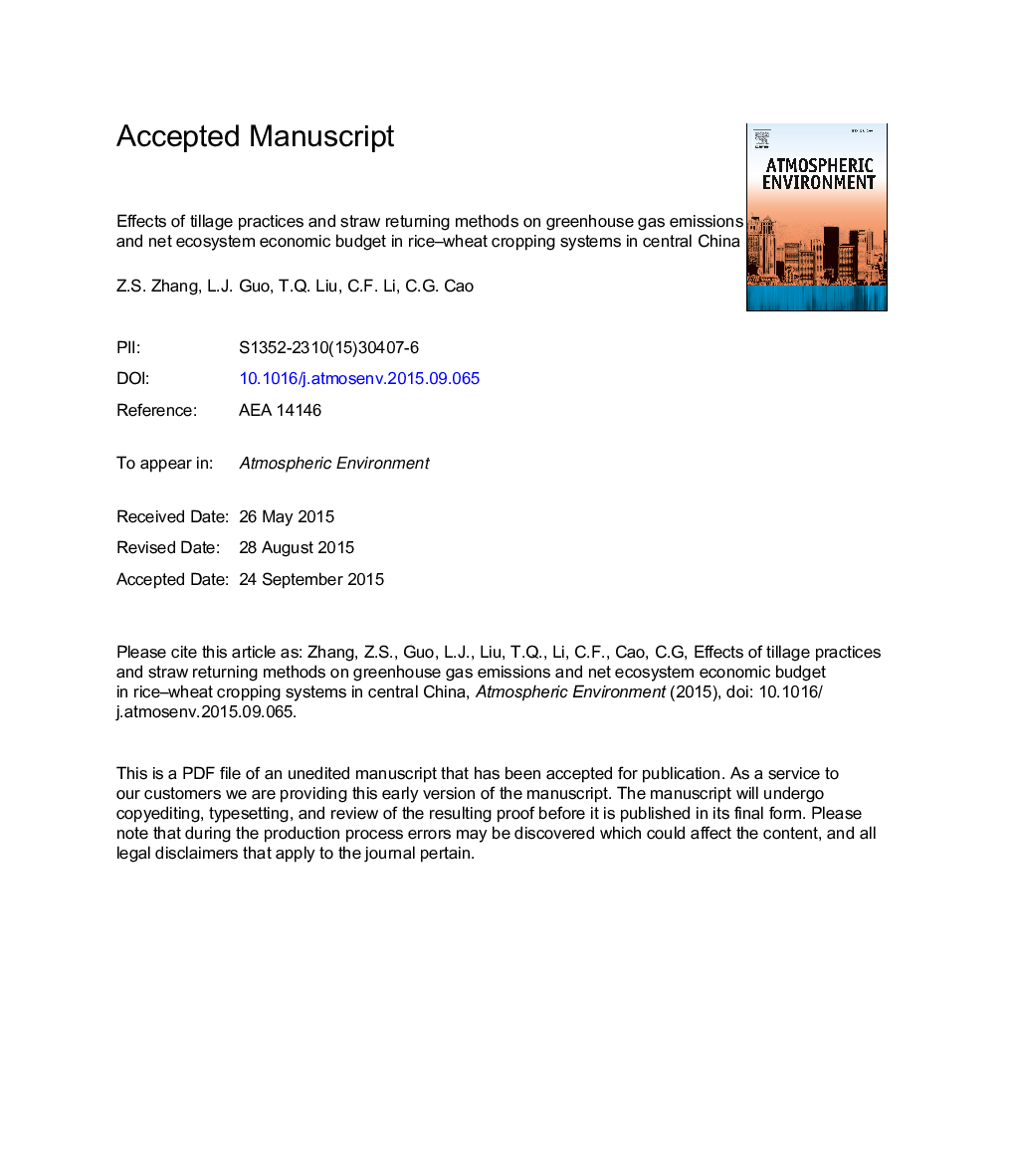| کد مقاله | کد نشریه | سال انتشار | مقاله انگلیسی | نسخه تمام متن |
|---|---|---|---|---|
| 6337073 | 1620349 | 2015 | 32 صفحه PDF | دانلود رایگان |
عنوان انگلیسی مقاله ISI
Effects of tillage practices and straw returning methods on greenhouse gas emissions and net ecosystem economic budget in rice-wheat cropping systems in central China
ترجمه فارسی عنوان
تأثیر عملیات خاکورزی و روش های بازنگری کاه بر انتشار گازهای گلخانه ای و بودجه اقتصادی اکوسیستم خالص در سیستم های برداشت گندم در چین مرکزی
دانلود مقاله + سفارش ترجمه
دانلود مقاله ISI انگلیسی
رایگان برای ایرانیان
کلمات کلیدی
مزایای اقتصادی، پتانسیل گرم شدن کره زمین، شدت گازهای گلخانه ای، بدون خاکورزی، بازگشت کراوات،
موضوعات مرتبط
مهندسی و علوم پایه
علوم زمین و سیارات
علم هواشناسی
چکیده انگلیسی
Significant efforts have been devoted to assess the effects of conservation tillage (no-tillage [NT] and straw returning) on greenhouse gas (GHG) emissions, global warming potential (GWP), greenhouse gas intensity (GHGI), and net economic budget in crop growing seasons. However, only a few studies have evaluated the effects conservation tillage on the net ecosystem economic budget (NEEB) in a rice-wheat cropping system. Therefore, a split-plot field experiment was performed to comprehensively evaluate the effects of tillage practices (i.e., conventional intensive tillage [CT] and NT) and straw returning methods (i.e., straw returning or removal of preceding crop) on the soil total organic carbon (TOC), GHG emissions, GWP, GHGI, and NEEB of sandy loam soil in a rice-wheat cropping system in central China. Conservation tillage did not affect rice and wheat grain yields. Compared with CT and straw removal, NT and straw returning significantly increased the TOC of 0-5Â cm soil layer by 2.9% and 7.8%, respectively. However, the TOC of 0-20Â cm soil layer was not affected by tillage practices and straw returning methods. NT did not also affect the N2O emissions during the rice and wheat seasons; NT significantly decreased the annual CH4 emissions by 7.5% and the annual GWP by 7.8% compared with CT. Consequently, GHGI under NT was reduced by 8.1%. Similar to NT, straw returning did not affect N2O emissions during the rice and wheat seasons. Compared with straw removal, straw returning significantly increased annual CH4 emissions by 35.0%, annual GWP by 32.0%, and annual GHGI by 31.1%. Straw returning did not also affect NEEB; by contrast, NT significantly increased NEEB by 15.6%. NT without straw returning resulted in the lowest GWP, the lowest GHGI, and the highest NEEB among all treatments. This finding suggested that NT without straw returning may be applied as a sustainable technology to increase economic and environmental benefits. Nevertheless, environmentally straw returning methods should be considered in future studies.
ناشر
Database: Elsevier - ScienceDirect (ساینس دایرکت)
Journal: Atmospheric Environment - Volume 122, December 2015, Pages 636-644
Journal: Atmospheric Environment - Volume 122, December 2015, Pages 636-644
نویسندگان
Z.S. Zhang, L.J. Guo, T.Q. Liu, C.F. Li, C.G. Cao,
